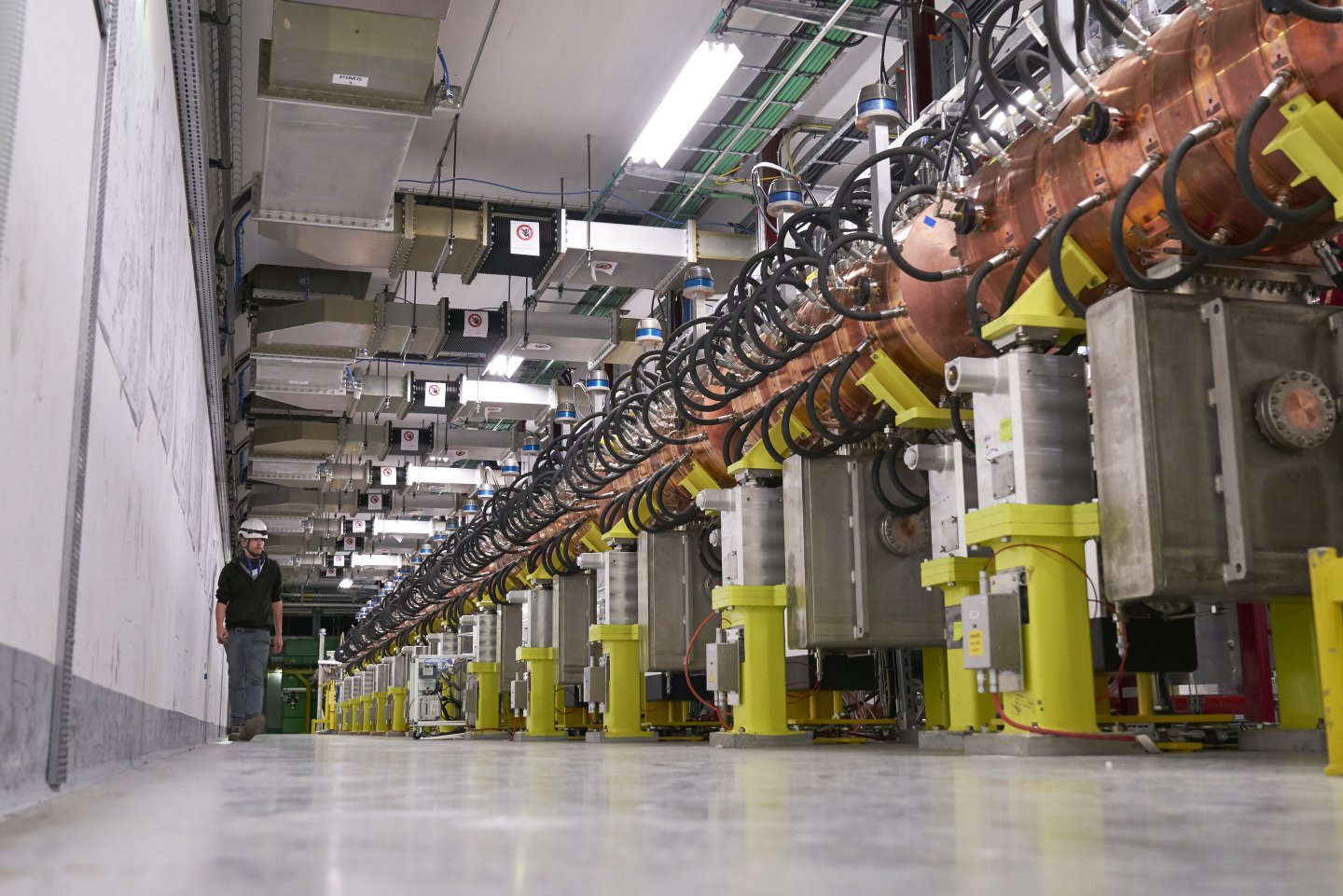Beam commissioning is progressing well across the entire accelerator complex, with initial completion achieved in the first machines of the chain. Last week, the first physics experiments started in the East Area, behind the PS, and others will follow suit shortly.

However, despite the overall positive momentum of beam commissioning, challenges have arisen along the way, highlighting the complexities involved. Last week, some of the components of one of the Linac4 accelerating structures, specifically the Cell-Coupled-Drift-Tube-Linacs (CCDTLs) 3 and 4, presented some issues. Both CCDTLs rely on a single klystron*, a high-power microwave amplifier crucial for providing accelerating power to the structures, which, in turn, transfer the power to the protons, which are then accelerated.
The high-voltage and high-frequency amplifier chain, including the klystron, experienced frequent voltage breakdowns, resulting in a significant drop in accelerating voltage within the two CCDTLs. This disruption severely perturbed the beam, rendering it unusable for the PS Booster. Experts intervened multiple times, initially focusing on fine-tuning the parameters of the amplifier chain and later on cleaning and replacing various components suspected to be causing the breakdowns.
By 22 March, a set of parameters was established to allow the acceleration of beams with a low proton intensity, enabling commissioning activities to continue in the downstream machines, including the LHC. However, these parameters did not meet the requirements for generating the full-blown physics beams that will be required in the coming weeks. On 24 March, a collaborative effort with experts from various groups convened in the CERN Control Centre (CCC) to conduct a final assessment. This evaluation aimed to determine whether the klystron needed replacing.
After re-establishing the parameters suitable for high-intensity beam acceleration, the beam was switched back on. Unfortunately, within the first hour, at least two high-voltage breakdowns occurred – the team thus concluded that the klystron replacement was necessary.
To maintain commissioning activities in the downstream machines, parameters allowing low-intensity beam acceleration were reinstated. This allowed operations to continue until Monday morning, when the klystron replacement process started. Such an intervention typically requires two to three days before beam operations can be restored.

Meanwhile, commissioning activities in the downstream machines have been suspended and the start of physics at the n_TOF facility, behind the PS, has been postponed (it was originally scheduled to start on 25 March). Commissioning of the North Area's secondary beams began on 22 March instead of 25 March. Thanks to this head start, the incident in Linac4 does not impact the overall schedule for the North Area, where physics is still scheduled to start on 10 April.
In Linac4, the old klystron has been removed, and the new one had been installed and tested by 26 March. Beam was sent to the PS Booster at 5 p.m. that day and, at 9 p.m., the LHC beam commissioning activities resumed. Since then, they have been progressing well.
On 27 March, beams entered into “test” collisions at the target energy of 6.8 TeV in the LHC. These were not yet stable beams, which meant that the experiments did not take data. Collisions for physics at 6.8 TeV are expected to take place on 8 April.
______
* A klystron is a high-power microwave amplifier used to generate high-power radiofrequency (RF) signals at a specific frequency. It operates on the principle of velocity modulation, where bunches of electrons are alternately accelerated and decelerated within a resonant cavity structure. This modulation process results in the amplification of the RF signal.

